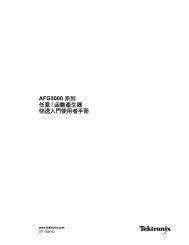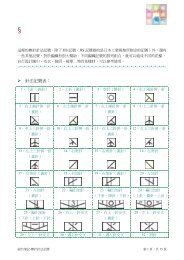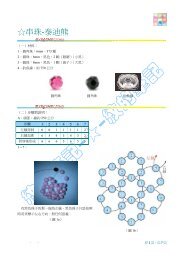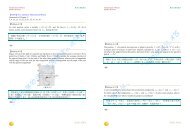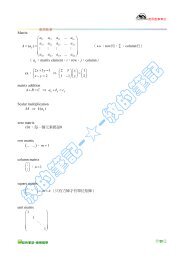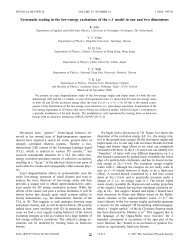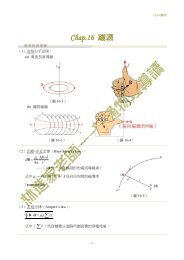Chapter 22 Materials Selection and Design Considerations
Chapter 22 Materials Selection and Design Considerations
Chapter 22 Materials Selection and Design Considerations
Create successful ePaper yourself
Turn your PDF publications into a flip-book with our unique Google optimized e-Paper software.
W104 • <strong>Chapter</strong> <strong>22</strong> / <strong>Materials</strong> <strong>Selection</strong> <strong>and</strong> <strong>Design</strong> <strong>Considerations</strong><br />
Figure <strong>22</strong>.17 Optical<br />
photomicrograph of the failed<br />
axle central core region, which is<br />
composed of ferrite <strong>and</strong> pearlite<br />
(<strong>and</strong> possibly bainite). 500�.<br />
[Reproduced with permission<br />
from H<strong>and</strong>book of Case Studies<br />
in Failure Analysis, Vol. 1 (1992),<br />
ASM International, <strong>Materials</strong><br />
Park, OH, 44073-0002.]<br />
Figure <strong>22</strong>.16 Optical<br />
photomicrograph of the failed<br />
axle outer perimeter region,<br />
which is composed of<br />
tempered martensite. 500�.<br />
[Reproduced with permission<br />
from H<strong>and</strong>book of Case<br />
Studies in Failure Analysis,<br />
Vol. 1 (1992), ASM<br />
International, <strong>Materials</strong> Park,<br />
OH, 44073-0002.]<br />
microstructure was completely different; from Figure <strong>22</strong>.17, a photomicrograph of<br />
this region, it may be noted that the microconstituents are ferrite, pearlite, <strong>and</strong> possibly<br />
some bainite. 5 In addition, transverse microhardness measurements were taken<br />
along the cross section; in Figure <strong>22</strong>.18 is plotted the resulting hardness profile. Here<br />
it may be noted that the maximum hardness of approximately 56 HRC occurred<br />
near the surface, <strong>and</strong> that hardness diminished with radial distance to a hardness<br />
of about 20 HRC near the center. On the basis of the observed microstructures <strong>and</strong><br />
this hardness profile, it was assumed that the axle had been induction hardened. 6<br />
At this point in the investigation it was not possible to ascertain irrefutably<br />
whether the axle fracture caused the accident or whether the accident caused the<br />
fracture. The high hardness <strong>and</strong>, in addition, the evidence of cleavage of the outer<br />
surface layer indicated that this region failed in a brittle manner as a result of being<br />
overloaded (i.e., as a result of the accident). On the other h<strong>and</strong>, the evidence of a<br />
mixed ductile-brittle mode of fracture in the central region neither supported nor<br />
refuted either of the two possible failure scenarios.<br />
Ferrite<br />
5 Ferrite, pearlite, <strong>and</strong> bainite microconstituents are discussed in Sections 10.5 <strong>and</strong> 10.7.<br />
6 With induction hardening, the surface of a piece of medium-carbon steel is rapidly<br />
heated using an induction furnace. The piece is then quickly quenched so as to produce<br />
an outer surface layer of martensite (which is subsequently tempered), with a mixture of<br />
ferrite <strong>and</strong> pearlite at interior regions.<br />
Pearlite



